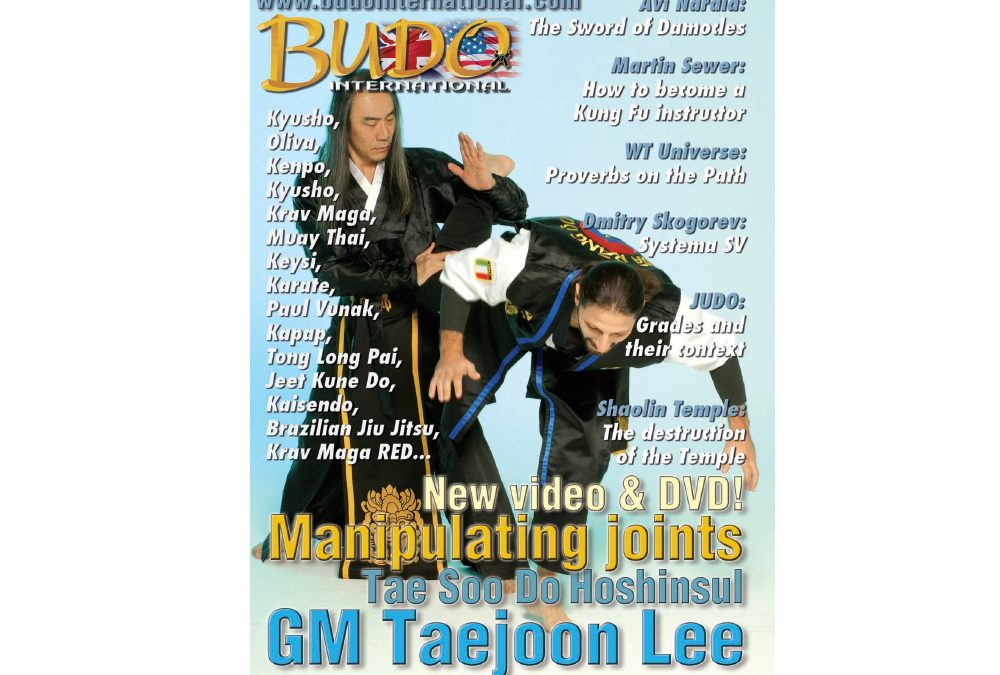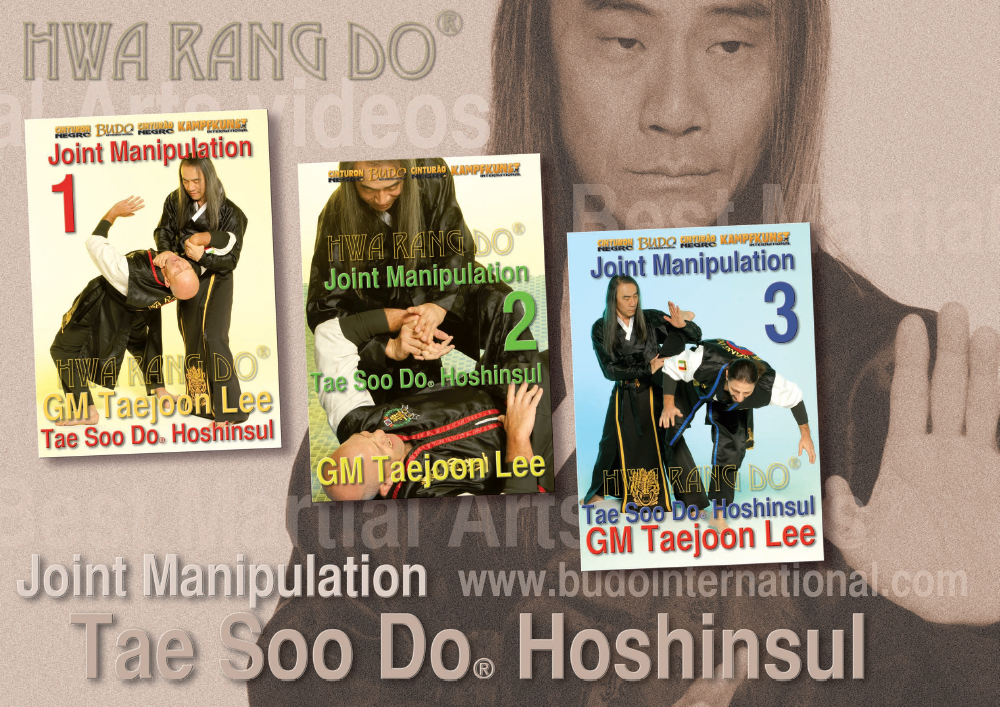lntroduction to Hwa Rang Do®’s Joint Manipulation with Tae Soo Do® Hoshinsul (Part 1)
Published in Budo International June 2019 Issue
By
Grandmaster Taejoon Lee
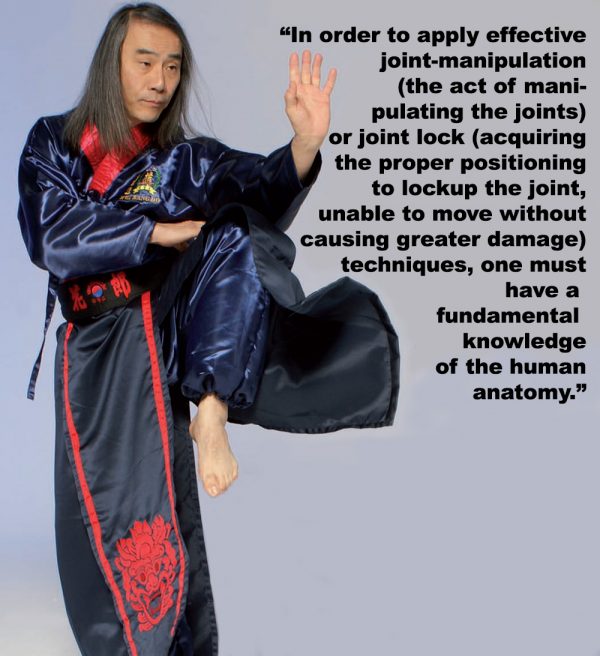
Watch Video of the Instructional Video Series on Youtube:
Introduction:
Hwa Rang Do® is a very multifaceted, comprehensive discipline that takes a holistic approach to learning to develop and cultivate balance within an individual, allowing the possibility to fully maximize their human potential, mentally, physically, emotionally, and ultimately spiritually.
One of the many components within its Four Divisions of study, Wae Gong (External Power), the physical curriculum is what is commonly known as Joint Manipulation. Utilizing the joints of the human anatomy with proper application of angles and force to control an opponent through pain/pressure compliance. Although a person may easily enlarge and strengthen their musculature, the ligaments and tendons connecting the bones and muscle to bones are difficult to strengthen. Hence, joint manipulation when properly applied can be highly effective with minimal strength and effort.
It is also one of the best ways to control and deter and aggressor without inflicting severe damage. Furthermore, the joints are easily dislocated or broken, but not easily repaired. The bones heal much faster than the ligaments and tendons of the joints, often times leading to mandatory surgery to reattach torn ligaments or tendons.
Hwa Rang Do® has extensive joint manipulation techniques for all forms of attacks (empty hand and with weapon), grabs, and holds to control, submit, takedown, and finish the assailant for self-defense, law-enforcement, and military applications. Through these articles we will attempt to give you a better understanding and hopefully shed new light on one of the most common category of techniques within the martial arts, which is often misunderstood and misrepresented, “Kwan Jyul Gi Sul”, the art of joint manipulation.
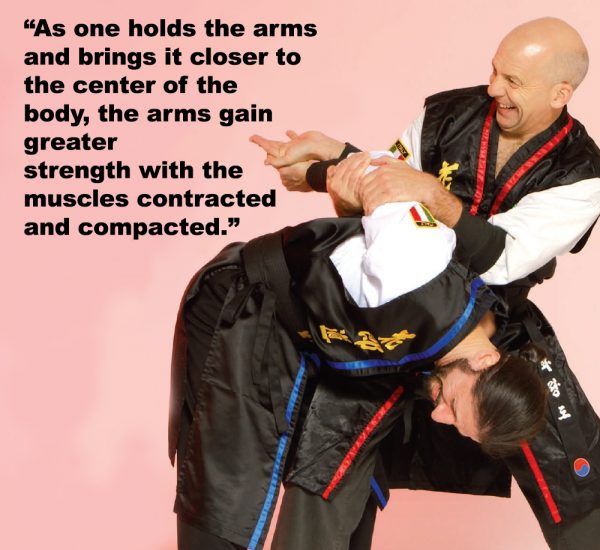
Stages of Fighting:
There are essentially Three Stages of Fighting, which must be addressed in the course of a physical altercation. Each stage requires different tactical and strategic responses. Being a complete, balanced system, Hwa Rang Do® covers all Stages of Fighting. Furthermore, in Hwa Rang Do®, we have an additional stage – the One Knee Position
- Stage I – Standup with Distance
This is when both you and the opponent are standing up with some distance. In Stage I, learning to quickly close the distance and utilize striking techniques with both hands and feet is the primary objective.
- Stage II – Standup In-close
This is when you are in-close, clinched up with your opponent while standing. In Stage II, applying joint manipulation, pressure points, grabs, holds, striking such as elbows, knees, head butts, and learning to takedown or throw the opponent to the ground is the primary objective.
- Stage IIIa – One Knee Position
This is a transitional stage where you are on the One Knee Position while the opponent is in a prone position. The goal here is to attempt to finish the fight by utilizing quick joint-locks to dislocate or submit the opponent without having to go to a prone position. The option to follow up with a submission in the prone position is always available if the integrity of the One Knee Position is compromised. This is vital in street survival, law enforcement, and military applications where being in a prone position will minimize one’s ability to counter and defend against multiple attackers.
- Stage III – On the Ground
In this final stage, both you and the opponent are in a prone position on the ground. This should be the last option and never the primary goal as one is limited to deal with other external attacks. In this situation, one must submit, or finish the opponent as quickly as possible and recover onto their feet. Learning how to effectively control and finish the opponent utilizing grappling techniques of Gotoogi (fight to the end – submission fighting) is the primary objective.
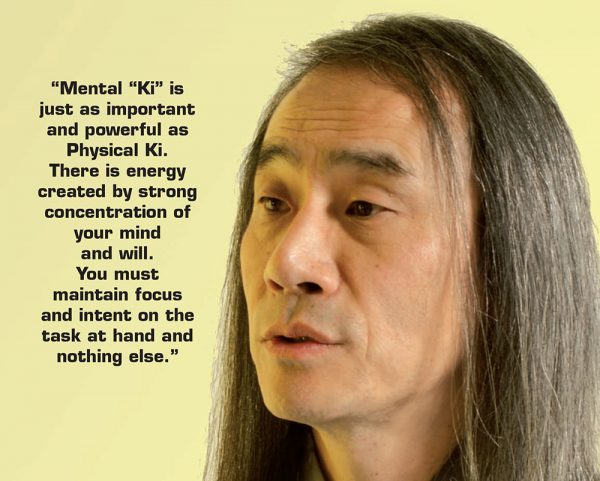
Overview
Within Hwa Rang Do®, most all of our techniques requires the individual to close the distance, take control, and takedown the opponent, ultimately finishing on the ground either by striking to a vital point or by submission (Submission here means not by tapping out as in sport, but by incapacitating the opponent).
The most difficult aspect to overcoming Stage I to Stage II when it comes to applying Joint-Manipulation is the blocking, catching, and securing of a punch. It is one of the most difficult tasks to achieve successfully on a consistent basis. However, when an attacker has a grip on the body or the clothing, you no longer need to attempt catching a random speeding fist, as you now know exactly where the hand is that is sitting in a stationary grip. Therefore, the application of a joint-manipulation technique is much more effective when applied against Stage II attacks of body or clothes grabs.
Can joint-manipulation be achieved effectively against strikes? Absolutely, but a separate component of blocking and trapping must be practiced proficiently. Also, it is important to understand that your hand position of the grip on the opponents hand, wrist, or elbow determines what joint-locks can be applied. This means that you either have a technique in mind and you strive to acquire the particular grip necessary or often times you end up with a certain grip on the opponents limb, which then must be quickly assessed and answered with the proper joint-manipulation technique.
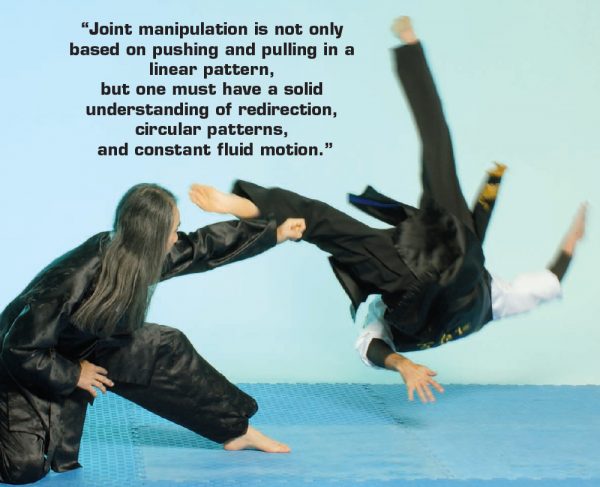
Concepts of Kwan Jyul Gi Sul – Joint-manipulation
Types of Joint Manipulation
In order to apply effective joint-manipulation (the act of manipulating the joints) or joint lock (acquiring the proper positioning to lockup the joint, unable to move without causing greater damage) techniques, one must have a fundamental knowledge of the human anatomy. Some joints (such as the shoulders and hips) are constructed in a ball and socket design to allow full range of motion. Other joints, such as the elbows and the knees are hinged joints, which function much like a door. Joints, regardless of type, are laced with tendons, ligaments, muscles, and nerves. Ligaments connect bones to other bones, tendons connect muscles to bones, and muscles create motion between bones by means of muscular contraction as muscles only have one function (contraction) and two states (contacted and relaxed). Then, joint-manipulation is acquiring the proper angles of the joints and applying exact pressure in order to dislocate, break, and/or deliver intense pain in order to control the opponent and effectively defend oneself from any types of violent attack. In this article we will address how to control the joints of the arms in order to subdue the attacker with great speed, precision, and minimal force.
1. Against the Joint:
This is most effective on joints, which work as a hinged joint such as elbow and knee where it does not rotate and only bends to one direction. By applying pressure on the joint with the other two ends stationary, the joint can be easily dislocated or hyper-extended, rendering the limb useless.
2. Angled Leverage:
The application of the angled leverage is most effective when applied to joints that work primarily as a ball and socket. These are joints, which allow for rotational movements such as the wrist, the shoulder, the ankle, and hip joint. By placing the joint typically in right (90 degree) angle, ligaments and tendons keeping the joint in place are under stress, losing its integrity. It is at this point where minimal pressure can be applied to force the dislocation of the ball from the socket.
3. Twist & Rotation:
The Twist & Rotation can be applied to both hinged and ball/socket joints. However, since it requires a strong grip on both sides of the joint, it is most effective when applied to smaller joints such as the fingers, the wrist and sometimes the elbow. This may not be a finish technique for dislocation of a joint, but it is often used as a setup to enter into a stronger joint lock.
4. Compression:
The Compression is exactly that. By placing something larger than the joint in the fold of the joint, then applying pressure inward from the extremities of both sides, the joint can be separated. Often times this is called “joint separation.” This is most effective when applied to the elbow or the knee.
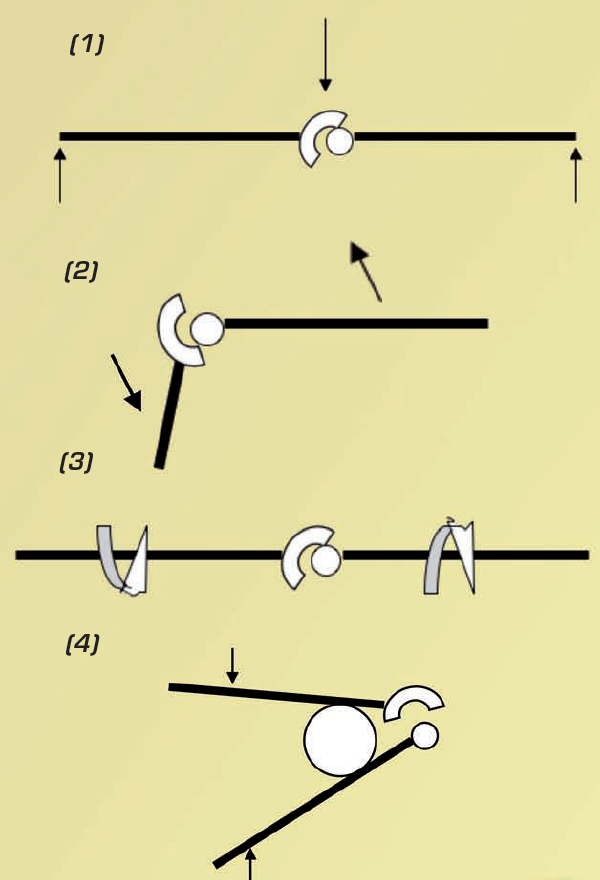
Other Concepts to Remember While Applying Joint Manipulation:
Fluidity – Arts such as Jujitsu (Japanese Art, which literally translates to “soft technique”),” Judo (Japanese Sport “soft way”), Aikido (Japanese Art “way of gathering Ki”), Hapkido (Korean Art which means the same as Aikido), Aikijujitsu (Japanese Art “gathering Ki soft technique”) all rely on the Three Principles of Um of the Um/Yang Theory (http://hwarangdo.com/philosophy/principles-of-the-art/): Won – Circular Motion, Yu – Soft Fluid Motion, Hap – Gathering or Combining. Joint manipulation is not only based on pushing and pulling in a linear pattern, but one must have a solid understanding of redirection, circular patterns, and constant fluid motion. It is best to practice the joint manipulation techniques with slow, smooth, fluid, constant movement rather than, practicing step-by-step in a stop and go movement. The step-by-step practice should only be done in the introduction to the technique for mnemonic purposes. Once understanding the necessary movements, the technique should be practiced with slow, constant movement, adding greater speed as one becomes more adept.
Whenever one stops the motion that is an opportunity for the other person to counter by tension and resistance. By continually moving with constant contact, one maintains control and dictates what the opponent does. Of course, this is also true with Life. Once we have gained momentum, we must learn to capitalize and take advantage of our progression. Once the opportunity is missed, who knows when it will return again? It is never the right time for rest when you are progressing, in motion, or in the middle of a task. One must have the mindset of being relentless until completion with the understanding that only failure comes in quitting and that every obstacle is an opportunity to innovate.
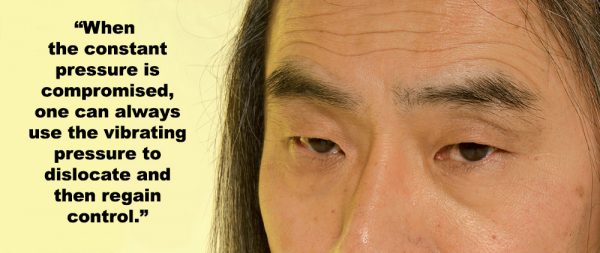
Easier to Control What is Near Than Far – This is a simple idea, but often overlooked as it is the case with most simple concepts. One must engage the opponent and position oneself close to the point of the focused attack. When the limbs are at its full extension, the extremities possess the least leverage and have no power. As one folds the arms and brings it closer to the center of the body, the arms gain greater strength with the muscles contracted and compacted. Like all things, you lose power and control the further it is away from you.
Change the World by Changing Yourself – It is always much easier to move yourself in relation to your opponent, than to try to move your opponent. One must control oneself, before he/she can control others. This is common sense, but the problem of common sense is that it is not so common. Of course it is easier to move myself than an external object or person, but you would be surprised how many people try to muscle their opponent while applying joint-manipulation techniques, any technique for that matter. One must understand that our reality exists only through our perception. Therefore, in order to control our reality, one must learn to control their perception and not by attempting to control the external world. Whether you believe this to be true or not, it helps the martial artist to understand that he/she is the one in power and control the outcome by controlling the actions of the self.
This idea is essential when executing techniques for combat. If you want the opponent closer to you, then you move closer to your opponent; it you want them to be by your side, then you move to their side, and etc. For instance in a takedown, one must realize that you are the one going down to the ground and you are taking the opponent down with you. To pick up a person and throw them as if you were throwing a ball, this is very difficult and unrealistic. This concept applies for standup fighting to ground fighting as well as in life. Positioning yourself in relation to your opponent, which offers you the greatest advantage should be the primary goal.
I ask my students to contemplate, “Is it easier to move a mountain or to walk around it?”
People Always do the Opposite – It is by nature that your opponent will always do the opposite of what you want them to do. If you try pulling, they with resist and pull back; if you push, they will push back; if you want them to go left, they will go right, etc. Therefore, you should be mindful of their responses and set them up accordingly to gain the advantage. The best way to control someone is to have him or her think it was his or her idea.
People Always Offend with the Same Offense – Interestingly however, contrary to the above, when you offend them, they do not do the opposite, but rather offend you with the same offense. For example, if you slap them, they will slap back, if you grab their arm, they will grab the arm, if you bite, they will bite back, etc. This also is important to understand, strategically, to setup your opponent in order to gain the upper hand.
Vibration v. Constant Pressure – There are different kinds of impacting blows. For dislocation of joints, vibrational impact is the most effective method. The vibration causes internal waves, which weakens the joint allowing for greater internal residual damage and ultimately dislocation. However, the constant pressure is necessary for control of the opponent by their joints, without dislocation. When the constant pressure is compromised, one can always use the vibrating pressure to dislocate and then regain control.
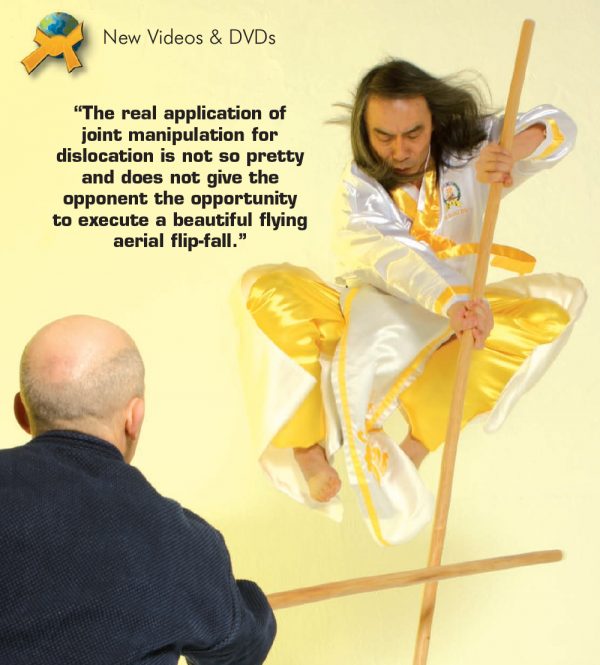
Physical Ki – While applying the physical technique, make sure to tighten the lower abdomen (Ha Danjun), which is the center for creating physical “Ki” power. Whether you believe in the existence of Ki Power or not, physiologically, tightening the abdomen, the core muscles, will keep your back and center aligned, allowing you to deliver greater power into any movement.
Mental Ki – Mental “Ki” is just as important and powerful as Physical Ki. There is energy created by strong concentration of your mind and will. You must maintain focus and intent on the task at hand and nothing else.
Learning How to Fall Properly – It is essential that before embarking on the practice of joint manipulation techniques one must learn how to fall properly (Nakbop). This is for obvious reasons to ensure your safety and prevent injury. More importantly, however, it is to maximize your training. By being able to fall well, you give the opportunity for yourself and your training partner to fully apply the techniques with increased speed and power without the fear of injuring yourself or the partner, which will enhance your skill level sooner.
Demonstration vs. Reality – The real application of joint manipulation for dislocation is not so pretty and does not give the opponent the opportunity to execute a beautiful flying aerial flip-fall. In fact, the joint-dislocation is made possible due to the fact that the joint is weaker than a person’s body weight so the body is anchored while the limb is torn away from its joint. Therefore, when applied properly with the appropriate speed and vibration, the body should never move and only its limb, dislocated from its joint. Learning how to make the proper adjustments and modifications to allow your training partner to fall without damaging the joint is also a skill, which must be learned and practiced.

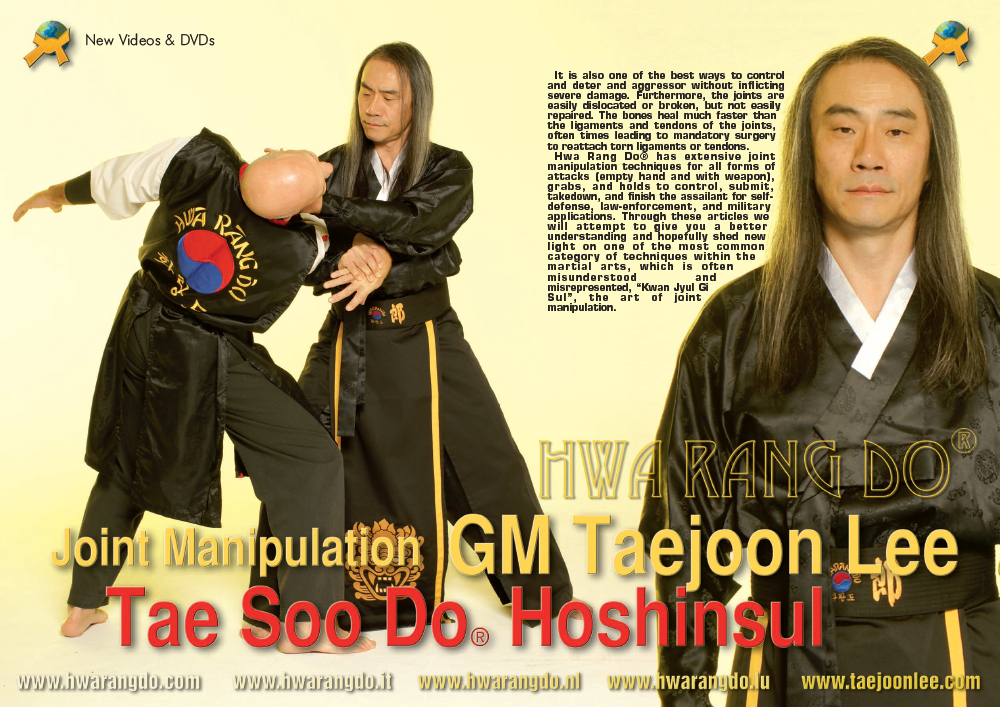

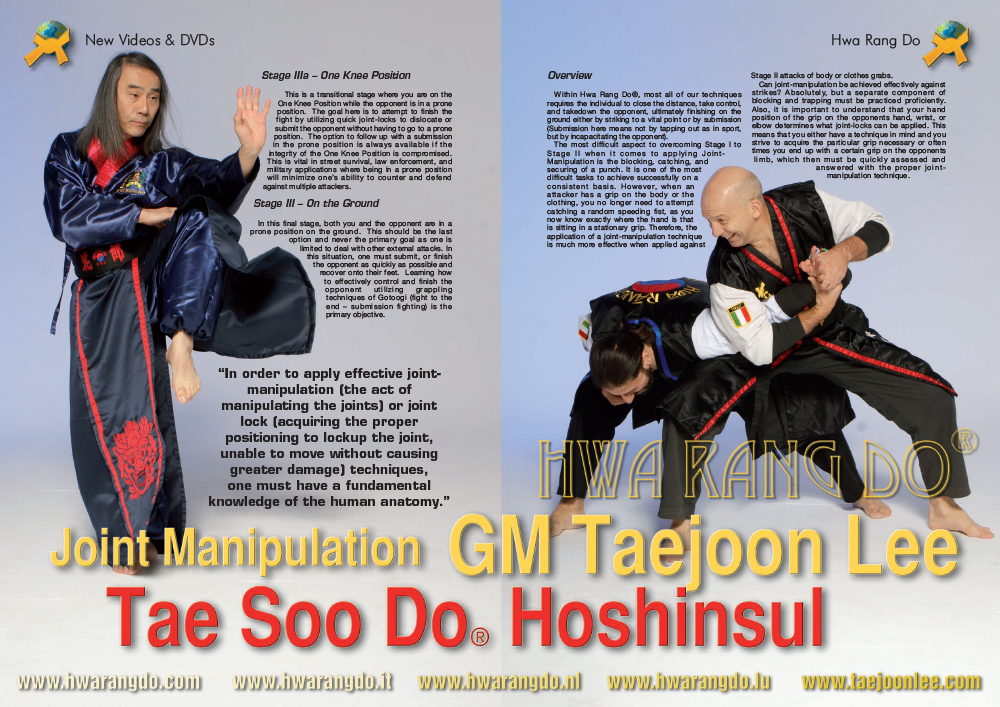
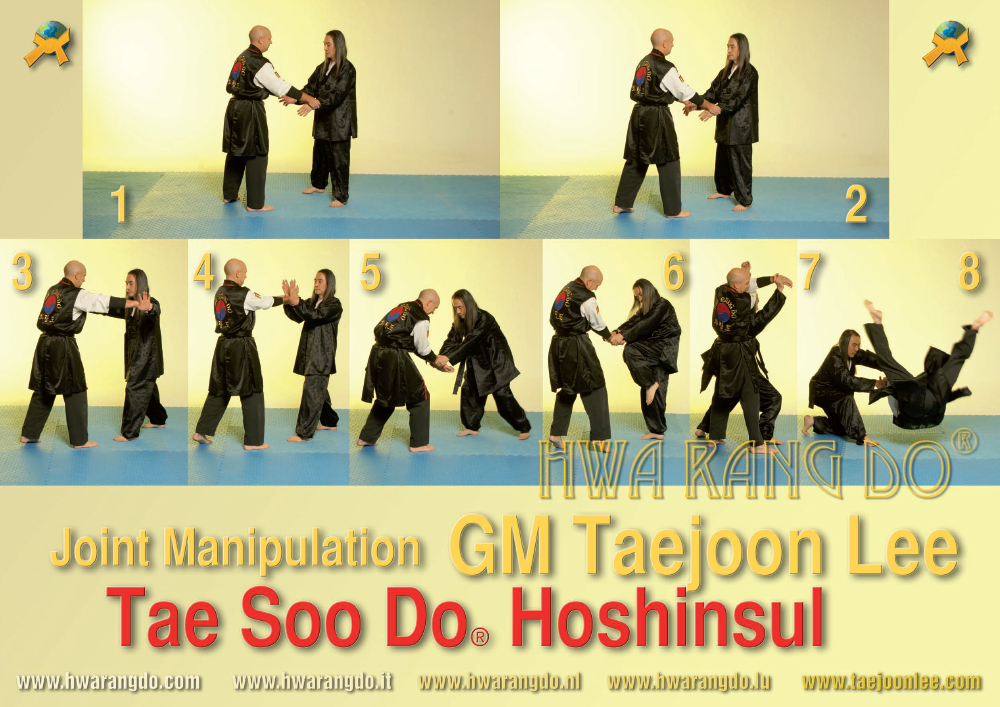
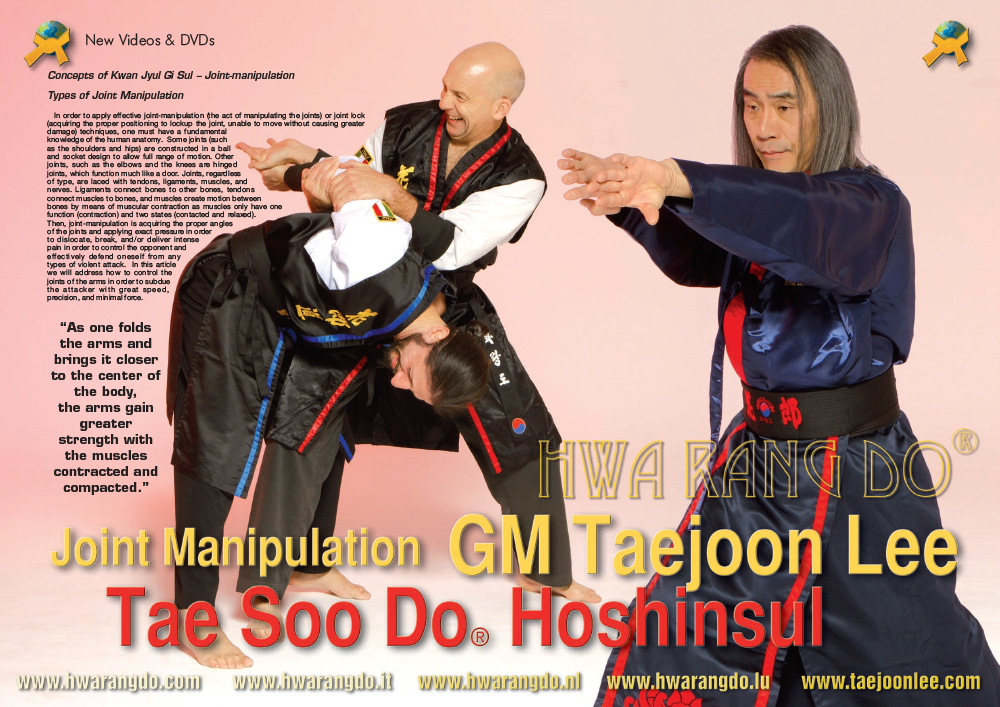
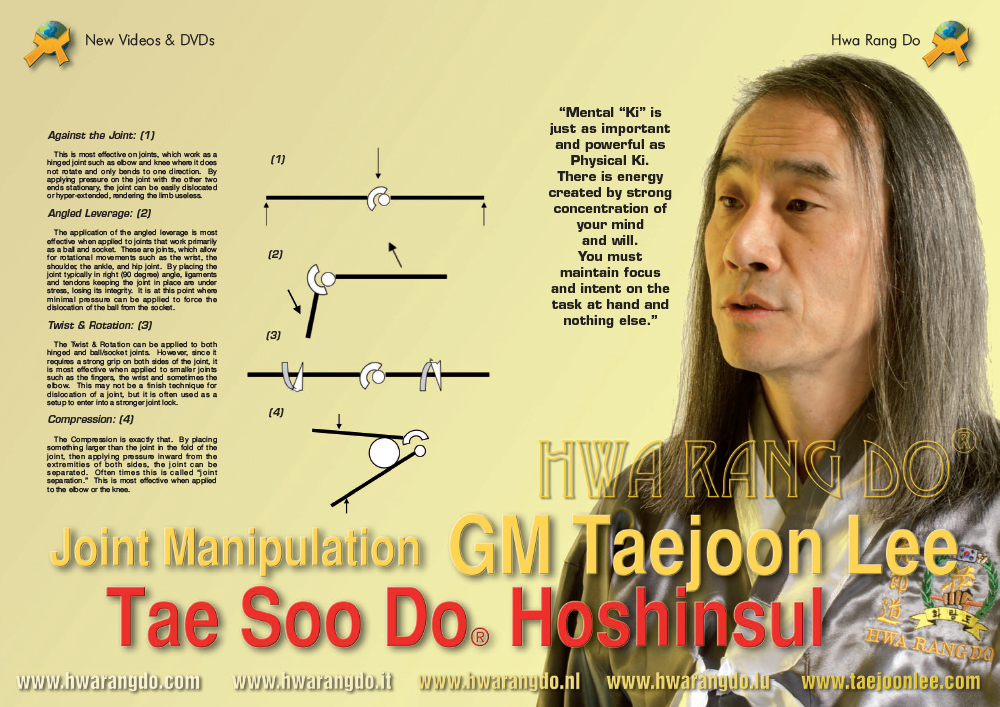
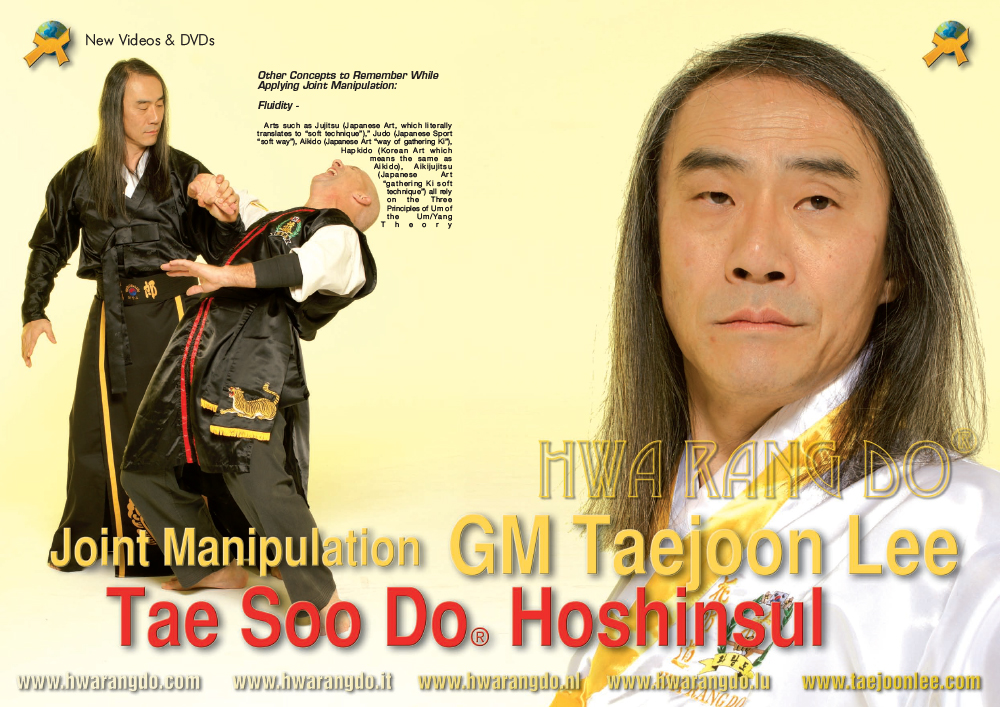
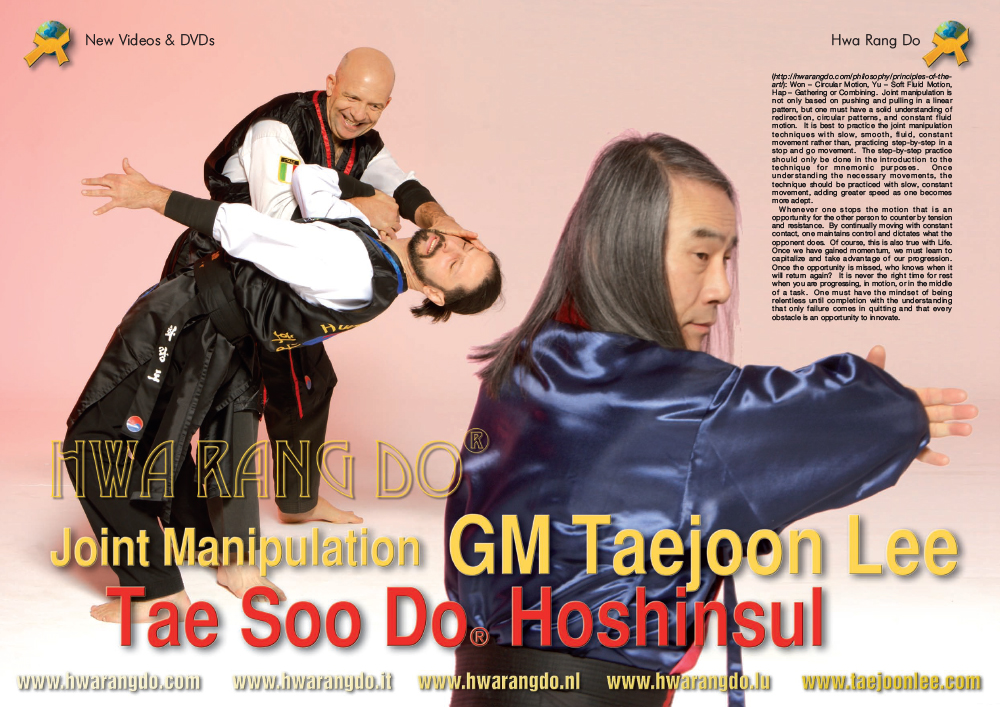
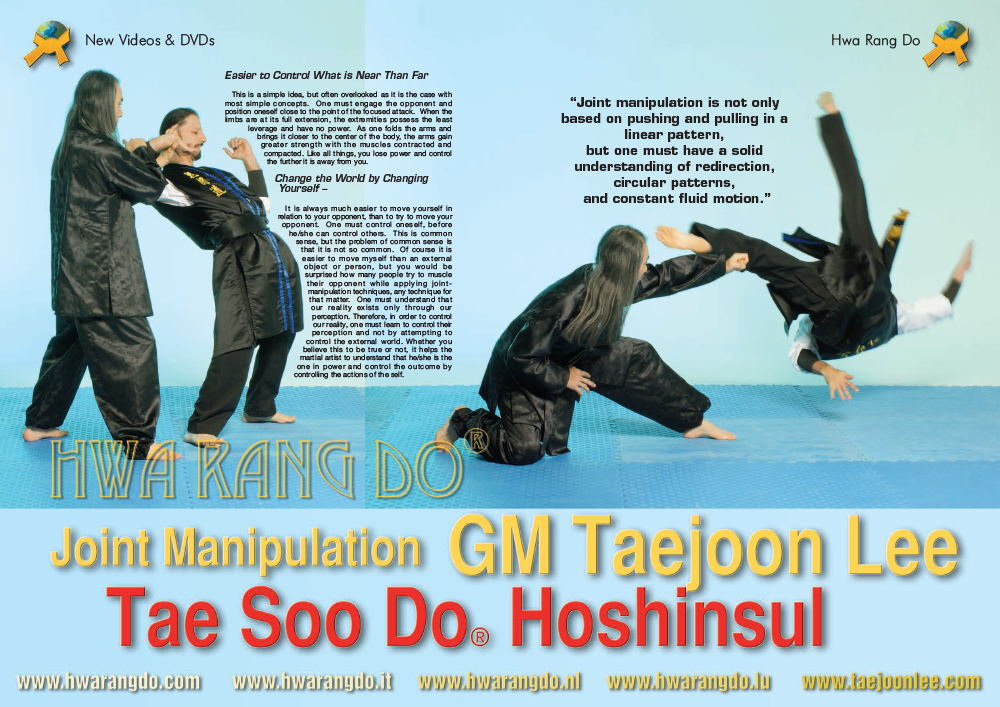

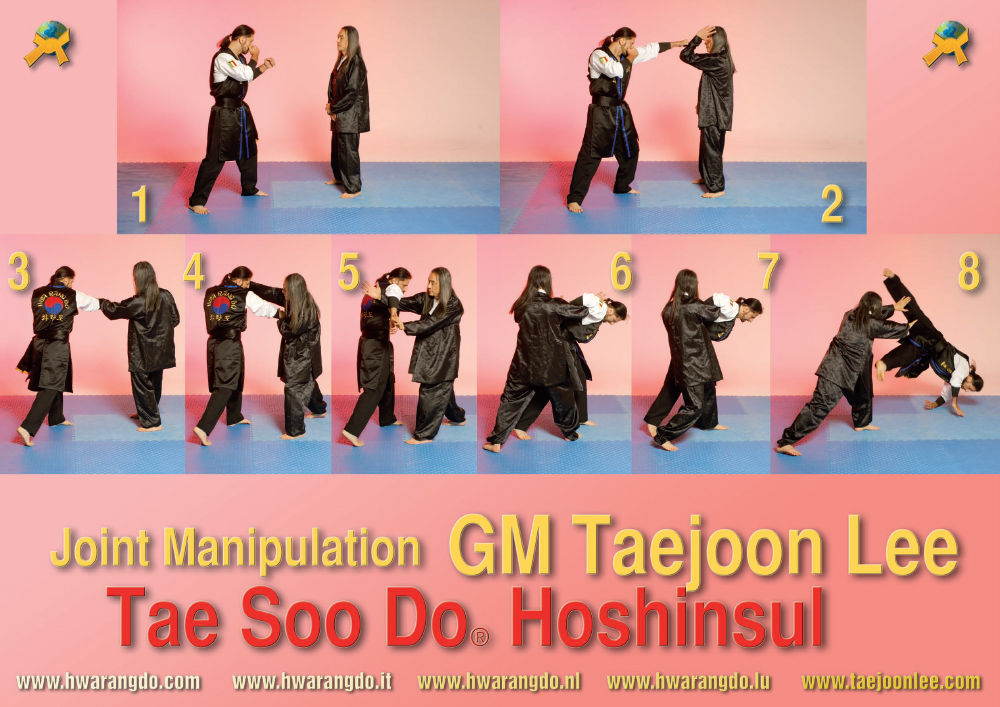
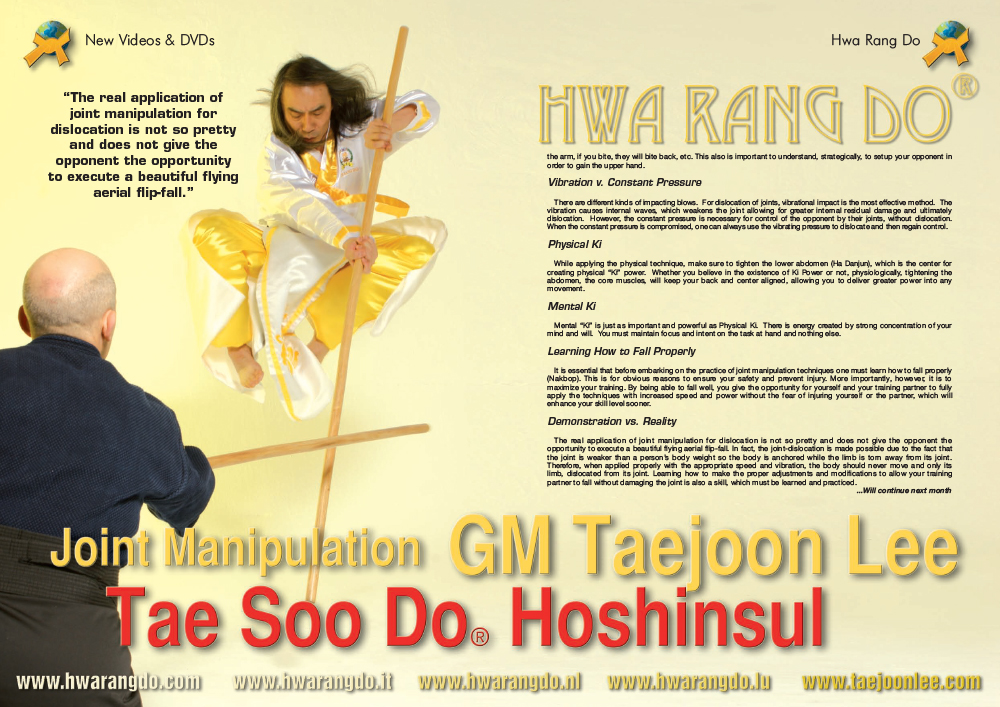
Tae Soo Do Hoshinsul – Joint Manipulation Vol. 1 Download
Tae Soo Do Hoshinsul – Joint Manipulation Vol. 2 Download

